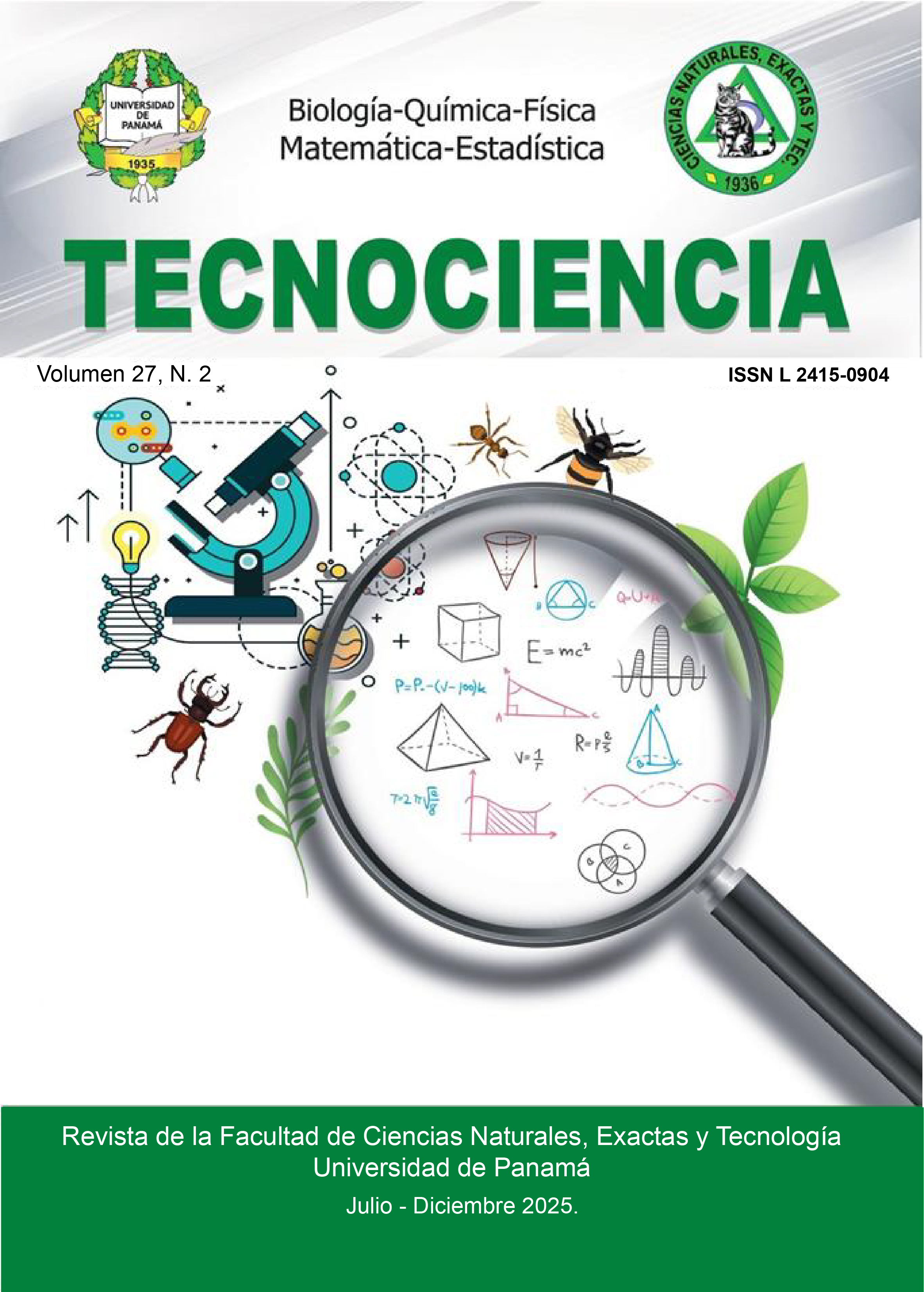

Copyright (c) 2025 Tecnociencia

This work is licensed under a Creative Commons Attribution-NonCommercial-ShareAlike 4.0 International License.
We studied Quebrada Ancha (Colón) from October 2018 to June 2019, to describe leaf packs macroinvertebrates assemblages, and to relate physical and biological variables. We established a 30m long reach, and during nine (9) months we estimated physical variables (width, depth, velocity, flow, grain profile), and collected three handful leaf packs (g), per month. Flow was higher during the rainy season, and grain profile was variable, although silt particles decline during the dry season. We collected 8310 leaf packs macroinvertebrates, with richness of 44 or 60 taxa, depending on precision level, family or genus, respectively. We determine 27 families in 9 insects orders, 7 Mollusk taxa, 2 groups of Collembola, Chelicerata, Crustacea, and one group of Turbellaria, Hirudinea, Oligochaeta, and Myriapoda. The more abundant families were Thiaridae (Melanoides sp.), Chironomidae, Hydrobiidae, Leptohyphidae (Vacupernius), Ancylidae, Hydropsychidae (Smicridea), Turbellaria, Elmidae (Microcylloephus) y Leptophlebiidae (Farrodes), in decreasing order. Positive significant correlations were estimated for: a) Flow vs Richness, No.Ind. and No.Ind/g; b) Coarse sand vs No.Ind/g, leaf pack weight, and silt; c) fine sand vs silt.